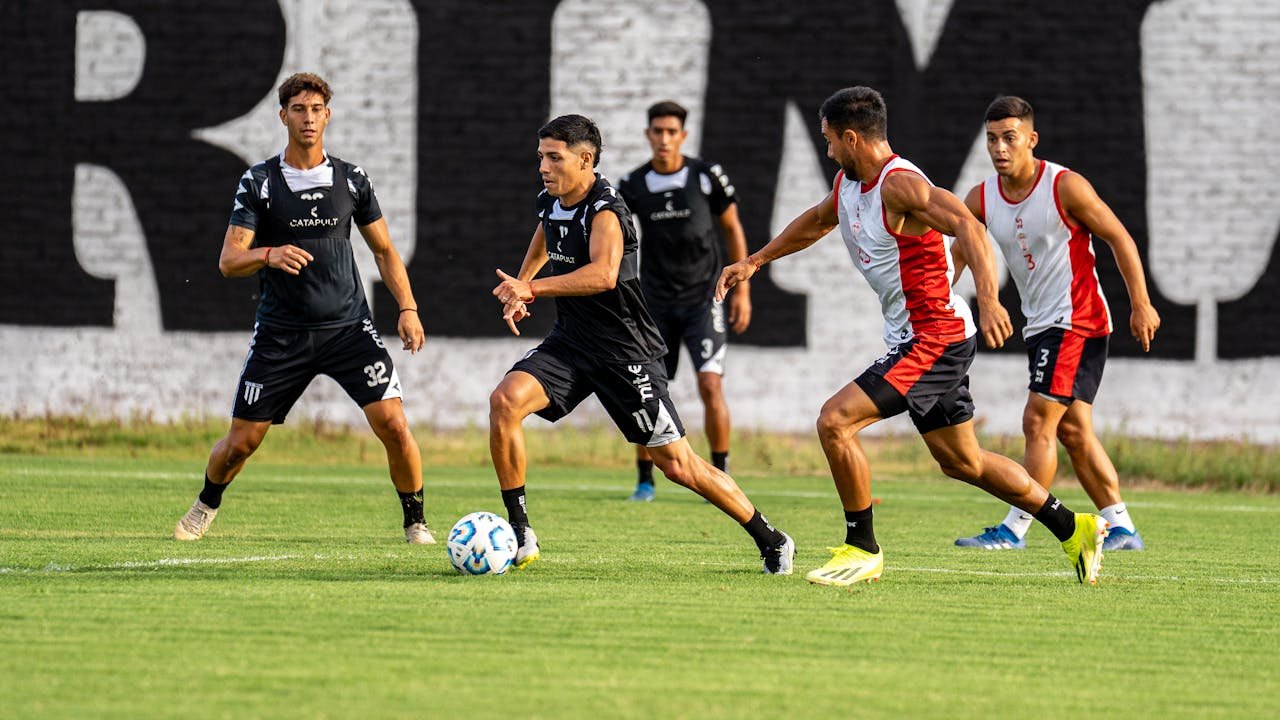Fast, deadly, and unpredictable—counter-attack strategies in soccer are a game-changer for teams looking to strike quickly. When executed properly, a counter-attack can dismantle even the best defenses, creating goal-scoring opportunities in just a few swift passes.
Many of the greatest goals in soccer history have come from counter-attacks. Whether it’s a long ball over the top or a rapid breakaway from a defensive position, teams that master counter-attacks have a significant advantage.
In this guide, we’ll break down the key tactics, positioning, and mindset needed to execute counter-attacks successfully. From quick transitions to exploiting defensive gaps, we’ll cover everything you need to know to turn defense into attack in seconds.
What is a Counter-Attack in Soccer?
A counter-attack in soccer is a rapid transition from defense to offense, aiming to exploit the opposition’s defensive gaps while they are still reorganizing. It typically occurs when a team regains possession and quickly moves forward before the opponent has time to set up their defensive structure.
Why Are Counter-Attacks Effective?
- They catch the opposition off guard.
- They create numerical advantages by attacking when defenders are out of position.
- They allow teams to capitalize on space left open by an opponent’s aggressive positioning.
Helpful Hint:
Timing is crucial in counter-attacks. React too slowly, and the defense will recover. Move too fast without control, and you may lose possession. The key is balance—quick but calculated movement.
How to Identify Counter-Attack Opportunities
Not every defensive situation is ideal for a counter-attack. Recognizing the right moment to strike requires awareness and quick decision-making.
Key Situations to Launch a Counter-Attack
- Winning the ball in midfield: A turnover in midfield allows for a quick break with players already ahead.
- Recovering possession in defense: If the opponent has pushed high, a well-placed long pass can start a counter.
- After an opponent’s failed attack: If the opponent has committed many players forward, they may struggle to recover defensively.
Players must always scan the field, looking for teammates making forward runs while assessing the opponent’s defensive gaps.
Key Players in a Counter-Attack
A successful counter-attack relies on specific players with key roles. These include pacey forwards, intelligent midfielders, and defenders who can initiate attacks.
Essential Players for Counter-Attacks
- Fast Wingers: Speedy wingers stretch the play and drive the ball forward.
- Creative Playmakers: Midfielders who can make quick, accurate passes to launch attacks.
- Target Strikers: A forward with strong positioning who can receive and finish quick passes.
- Ball-Winning Defenders: Center-backs or defensive midfielders who regain possession and start the break.
Stats:
According to FIFA statistics, teams that effectively execute counter-attacks score 30% more goals from open play compared to teams that rely solely on possession-based play.
Best Formations for Counter-Attack Strategies
While counter-attacks can be executed in any formation, certain setups make it easier to transition quickly from defense to attack.
Top Formations for Counter-Attacks
- 4-3-3: Provides fast wingers and a central striker for quick breaks.
- 4-2-3-1: Offers defensive stability while allowing midfielders to support the attack.
- 3-5-2: A great balance between defensive cover and attacking width.
Each formation has strengths depending on the type of players available. The key is having wide players and midfielders who can move the ball forward quickly.
How to Execute a Successful Counter-Attack
Speed, precision, and decision-making are the three pillars of a deadly counter-attack. Every second counts, and players must act quickly while maintaining control.
Key Steps in a Counter-Attack
- Win Possession: The first step is regaining the ball, whether through a tackle, interception, or goalkeeper save.
- Quick Transition: Instead of holding onto the ball, players must immediately look to move forward.
- Exploiting Space: Identify gaps left by the opposing defense and push the ball into those areas.
- Direct Passing: Avoid unnecessary sideways or backward passes—play the ball forward efficiently.
- Finishing the Attack: Whether through a shot on goal or a final assist, the attack should end with an attempt on target.
These steps must be executed seamlessly. Hesitation gives the opposition time to recover, killing the momentum of the counter-attack.
Passing Techniques for a Fast Break
One-touch passing and long balls are crucial in counter-attacks. The objective is to move the ball into attacking positions with as few touches as possible.
Best Passing Techniques for Counter-Attacks
- One-Touch Passing: Reduces time on the ball and speeds up play.
- Through Balls: Splits the defense, allowing attackers to run onto the ball.
- Long Balls Over the Top: Effective against high defensive lines, sending attackers through on goal.
- Diagonal Switches: Moves the ball quickly to the opposite side, where space is available.
Helpful Hint:
Accuracy is more important than power when passing during a counter-attack. A well-placed pass at the right moment is far more effective than a rushed, overhit ball.
Counter-Attacking Drills for Training
Practice is essential for mastering counter-attack strategies in soccer. Here are some effective drills to improve reaction speed, passing accuracy, and attacking coordination.
3v2 Counter-Attack Drill
Setup: Divide players into two teams—three attackers vs. two defenders.
Objective: The three attackers must quickly transition from midfield and score before the two defenders can organize.
Focus: Quick passing, intelligent runs, and finishing under pressure.
Goalkeeper Distribution Drill
Setup: The goalkeeper starts with the ball and immediately launches a counter-attack.
Objective: Attackers must make forward runs as soon as the goalkeeper gains possession.
Focus: Quick reaction time and positioning to create goal-scoring chances.
One-Touch Passing and Finishing Drill
Setup: Players pass the ball with one touch before finishing on goal.
Objective: Simulate real-game counter-attacking passing patterns.
Focus: Precision, movement, and speed of play.
Stats:
Studies show that teams executing fast breaks with three or fewer passes are 50% more likely to score than teams taking more than five passes to reach the goal.
Common Mistakes to Avoid in Counter-Attacks
Even the best teams make mistakes when counter-attacking. Recognizing and avoiding these errors can make the difference between scoring and wasting an opportunity.
Biggest Counter-Attacking Mistakes
- Holding the Ball Too Long: Slows down play, allowing defenders to regroup.
- Poor Passing Decisions: Attempting risky passes instead of finding the best available option.
- Ignoring Wide Players: Wingers provide excellent attacking outlets, but they are often overlooked.
- Taking Too Many Touches: Counter-attacks require minimal dribbling—quick, precise passing is more effective.
- Finishing Hesitation: Delaying a shot gives defenders and the goalkeeper time to adjust.
To maximize success, teams must remain disciplined, decisive, and aggressive when launching counter-attacks.
Frequently Asked Questions
Wrapping Up
Counter-attack strategies in soccer offer one of the most exciting and effective ways to score goals. Teams that master quick transitions, precise passing, and intelligent positioning can consistently create goal-scoring opportunities while putting pressure on their opponents.
The key to a successful counter-attack lies in recognizing the right moments to break forward and ensuring every player understands their role in the transition. Speed and accuracy are everything—hesitation allows the defense to recover, killing the momentum.
From choosing the right formation to drilling effective counter-attacking patterns, teams can improve their attacking play with dedicated practice. Whether at a professional or amateur level, counter-attacks remain a game-changing tactic that can lead to quick, decisive victories.
Now it’s time to put these strategies into action. Train hard, play smart, and take advantage of every opportunity to hit your opponents on the break!





